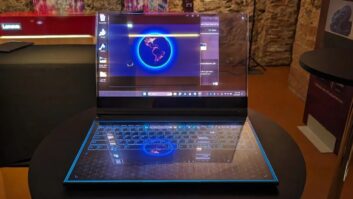Las Vegas — Nicholas Negroponte, founder of the One Laptop Per Child Project (OLPC) and the MIT Media Lab, gave the opening keynote yesterday morning at the 2008 International CES Industry Insider Series session on Technology in Emerging Countries.
Negroponte used the time to discuss the purpose of the OLPC project. Essentially, he said his organization is working towards the goal of eliminating poverty through education and what he calls “learning learning,” a concept the said is often misinterpreted.
“We want children to keep a passion for learning,” he said. By way of example, Negroponte spoke about his experiences visiting classrooms in a number of developing countries and how, based on what he saw, he felt the level of excitement about learning among those children dropped off dramatically from the time the children were in the first or second grade to the time they reached fourth or fifth grade. He addressed the popular idea among many in the developing world that the reason so many children in developing countries leave school early has to do with a need to take care of their families. He conceded that this was likely at least part of the reason, but added “school is pretty boring, and that has to change.”
Negroponte used a “time machine” analogy to drive his point home. He said if one were to take a time machine and go back 150 years and bring a surgeon from that time into our own, that surgeon would likely not recognize any of the current operating procedures because of how much technology has changed they way surgeons work. At the same point, he said if you were to take a teacher from 150 years ago and put them into most modern classrooms, “they could be substitute teachers!”
The process of how we educate children has, in large part not changed, but “what has changed is what [children] do outside of school,” Negroponte said, referring to how technology plays such a role in the lives of modern children, particularly in developed nations.
“We have to bring technology into the learning environment and bring technology to the kids,” he said.
Negroponte said he had already seen this theory work with a school his family had helped build in Cambodia a few years ago. He said he sent his son to work at the school and gave him a collection of laptops to hand out to the children. His son let the children take the laptops home at night, and though the parents were intimidated by the machines at first, soon whole families grew to appreciate them. The next year, Negroponte said, 100 percent more children showed up for first grade.
While the project is still getting its legs, the organization launched a temporary promotion during the holidays called “Give One. Get One” that allowed consumers to purchase two of the project’s XO laptops; they would get to keep one and the other was given to a child in a developing nation. Negroponte reported during his speech that the organization had shipped 162,000 laptops and the end of 2007 as a result of the campaign.
Negroponte stressed the importance of the project’s corporate partners like Quanta and Brightstar in helping to keep the project moving.
Intel had been a partner for a few months but dropped out of the project last week.
To learn more about the One Laptop Per Child project, visit www.laptop.org.













